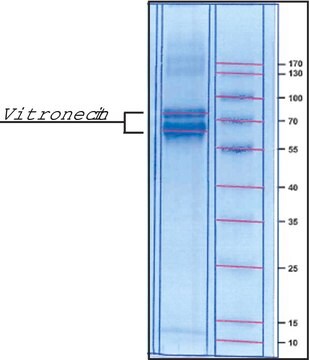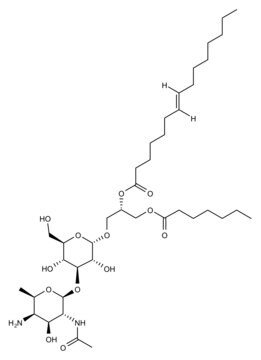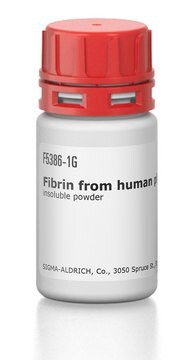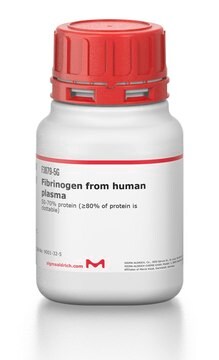一般說明
Vitronectin, also known as epibolin and S protein, is a 75 kDa protein. It consists of three glycosylation sites. Vitronectin is mainly expressed in plasma.
應用
Vitronectin has been used as a constituent of serum free media for culturing skeletal muscle and for growth and myelination of motoneurons by Schwann cells. It has also been used as a constituent of enriched co-culture media for culturing rat spinal cord.
Vitronectin can be used with cells with integrin receptors that bind vitronectin, including platelets, endothelial cells, melanoma cells, and osteosarcoma. It is recommended as a cell culture substratum at 0.1 μg/cm2. Optimal conditions for attachment depend on cell line and application.
生化/生理作用
Vitronectin inhibits the membrane cytolytic attack complex of the complement system. It interacts with glycosaminoglycans, collagen, plasminogen and the urokinase-receptor. Vitronectin binds to heparin, thrombin and antithrombin III during coagulation and may play a role in the coagulation pathway. It acts a connector between cell adhesion and physiological proteolysis. Vitronectin in association with integrins αvβ3, αvβ5, αvβ1, αIIbβ3, αvβ6 and αvβ8 stimulates cell adhesion, spreading and migration.
成分
Vitronectin is a glycoprotein present in plasma and tissues, and is one of the major cell adhesion proteins, along with fibronectin, in plasma. The N-terminal residues of vitronectin are identical to somatomedin B and are followed by an R-G-D sequence that interacts with a specific cell-surface receptor. The central domain of vitronectin is enriched with hydrophobic residues. Closer to the C-terminus, it has an arginine rich region that allows for heparin binding activity.
注意
The lyophilized product should be stored desiccated at 2-8°C. Under these conditions it is stable for at least 2 years. Aliquots should be stored at -20°C or -70°C, but repeated freezing and thawing should be avoided.
準備報告
This product is supplied as a cell culture tested lyophilized powder from buffered saline. It is recommended to use polypropylene vessels during handling, due to the strong affinity of vitronectin for hydrophilic surfaces. Reconstitution of this product can be done with 1 mL of water per vial. The stock solution should then be filter-sterilized using a 0.2μm membrane and aliquoted and frozen for long term storage.







